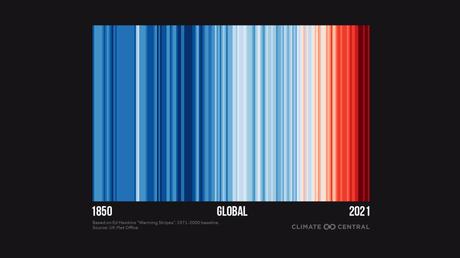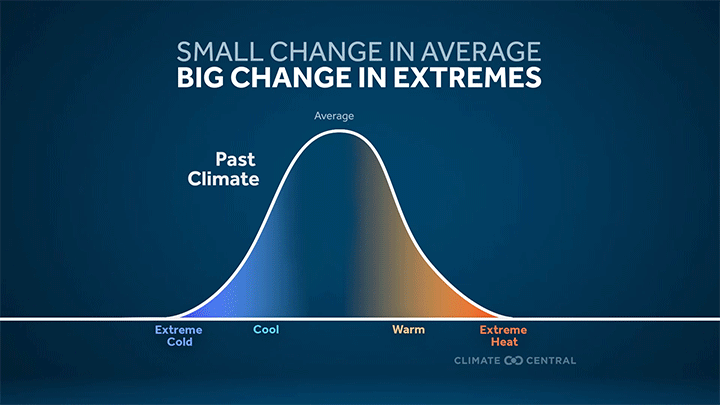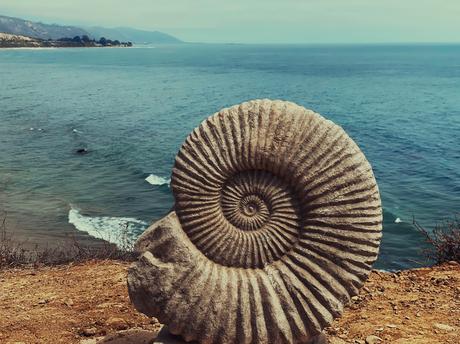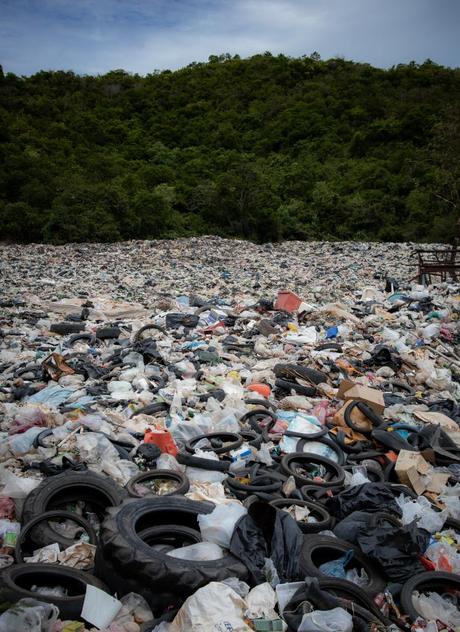Greta Thunberg has with the help of over a hundred experts created a book filled with ideas and research about the changes in our climate. The Climate Book looks at the changes from a wide range of perspectives and it is a valuable resource if you are looking for a summary of the problems. The first three parts are devoted to looking at How Climate Works, How our Planet is Changing, and How it Affects Us.
Greta says:
“This book is intended to be democratic because democracy is our best tool to solve this crisis. There may be subtle disagreement between the people writing from the front lines. Each person in this book is speaking from their own point of view and may arrive at different conclusions. However, we need all of their collective wisdom if we are to create the enormous public pressure required to make change. . . I believe that the most important conclusions are yet to be drawn – and hopefully they will be drawn by you.”
This book tells the story of the current changes that we are experiencing using “the best available science – a book that covers the climate, ecological and sustainability crisis holistically.” Our understanding of this complex problem is continuously growing and part of the problem with climate change is that there is not a single factor that is responsible. For example, it was recently suggested that “Dust that billows up from desert storms and arid landscapes has helped cool the planet for the past several decades, and its presence in the atmosphere may have obscured the true extent of global heating caused by fossil fuel emissions.” see Atmospheric dust may have hidden true extent of global heating. In contrast, the problem with the ozone hole was easy to explain – the ozone hole was caused by chemicals called chlorofluorocarbons, or CFCs.

Image
Greta says that we need to understand the problems in order to minimise the effects of human-made changes to our climate. The first three parts are great for helping us understand the challenges and also broadening our knowledge and understanding of how the climate is changing and also how it may, for example, affect our health due to an increase in air pollution. Several of the challenges that we are facing, such as an increase in air pollution, are global problems and thus, they require global cooperation.

Image
The focus of this post will be on Part Four – What We’ve Done About It!
We will explore what kind of thinking has so far dominated the resolution of the climate crisis. What has been missing in that approach? Greta suggests “A whole new way of thinking”. What does she mean by this and how would this affect our way of living?
Politicians base their views and agendas based on public opinions in the free world. Greta says that “if enough people cared enough about ecology and sustainability, then our political leaders would have no choice but to start facing up to these matters in a credible way. This is slowly beginning to happen, but so far we are barely scratching the surface.”
Underlying our approach to dealing with climate change is our view of nature.
Our way of treating nature and natural resources has been based on the idea that we humans have the right to use natural resources.
Capitalist consumerism and market economy as well as political ideologies such as socialism and liberalism are based on the idea that we can exploit nature for our own purposes and this needs to change in order for us to have a chance to minimise the effects of climate change.
This way of looking at nature is in contrast with the approach used by indigenous people. For example, the Maori people view nature and humans as equal.
“In the culture of the Maori people of New Zealand, humans are deeply connected with nature; the two are equal and interdependent, even kin. The idea is reflected in the Maori word ‘kaitiakitanga’, which means guarding and protecting the environment in order to respect the ancestors and secure the future.”
Our way of dealing with and talking about climate change is based on the views of groups that are often the highest global emitters of CO2.
The transition to renewable energy has so far been slow and part of the problem is the persistence of using fossil fuels. We have created a world that relies on using fossil fuels and our thinking is characterised by the idea this is first of all a great resource that we can use. Secondly, any change will be costly and less efficient. The fossil fuel industry has known about global warming since the 1970s and they have used their power to delay any actions. In addition, they have influenced the debates related to climate change.

Underlying our thinking has been the idea that our way of life does not need to change, that is, the way the Global North is living.
Saving our way of living in the developed world has been the priority rather than saving the climate. Greta says: “Until recently, you could argue that it was possible to save the climate without having to change our behavior. But that is no longer possible.”
Much of the focus so far has been on what we should do to save our climate but maybe we should instead focus the attention on what we should stop doing.
But how is it not possible that we do not have any solutions to the problems rather than changing our behaviours?
Our actions so far have been based on finding ways of cheating.
Since there appears to be no magic technological solution in sight, the focus should be on giving our lives more meaning. We should stop selfish overconsumption.

Our comment on the thinking behind The Climate Book
We used a tool from Direct Attention Tools by Edward de Bono to evaluate the thinking, the P.M.I. This stands for Plus, Minus and Interesting.
Plus
- + the inclusion of a range of experts from a range of different fields
- + the inclusion of different opinions and ways to look at the changes to our climate
- + its scientific approach
- + the use of emotional language
- + the idea that solutions need to be global and include approaches to nature and natural resources practised by indigenous people
- + personal lifestyle choices are explored and included
Minus
- – the restrictions put on ways to search for solutions to the problems – see the book No Miracle Needed by Mark Z Jacobson, which suggests that by using technologies to harness, store and transmit energy from wind, water and solar power we can solve the climate crises.
- – the moralistic and emotional calls to “educating oneself”, thereby disregarding economic drives and technical limitations,
- – a whole new way of thinking is needed and a systemic change but what is meant by this remains vague other than it has to do with lifestyle changes
- – the necessity of the end of economic growth is not argued
- – nowhere it is made explicit what the underlying assumptions are. 1. The earth heats up. 2. This is caused by humans. 3. It threatens our survival. Alternative views on these are not mentioned, let alone discussed.
Interesting
- Interesting to combine the suggested changes in our approach to nature with existing technologies to move away from our dependence on natural gas, bioenergy and nuclear energy without relying on blue hydrogen and carbon capture and storage
- The book contains many justified (but accusatory) observations of the category “that’s just the way it is”. For example about politicians, companies and financial interests. It would be interesting to design new mechanisms, ideas and concepts that break away. New ways, new laws, new cultural norms, new institutions, new economic mechanics. For instance: How to ban consumerism as the new smoking?
- In the book, there can be discovered many Idea Sensitive Points: areas where a good idea could have a decisive impact on sustainability and global warming. For instance: In What Ways Might We make the emissions of harmful substances visible to the general public?
We think that a new paradigm may be suggested in the book. If a new paradigm is suggested it should be made explicit. We will further explore the search for a new paradigm later. We will explore ways to design new economic systems that regulate the factors of production, including land, capital, labour, and physical resources.
Next blog post
In Part Five – What We Must do Now – ways to get out of this “mess” is explored. We will continue to look at that in our next blog post.
Advertisement